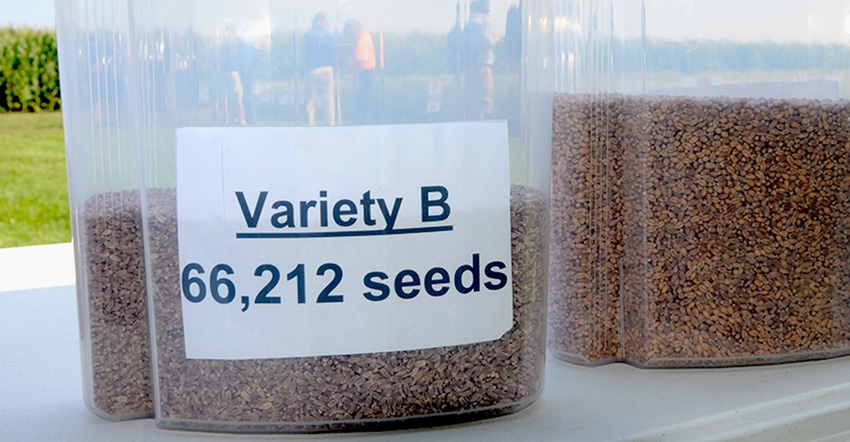
Wheat is a funny crop, depending on where you live. Out West it could be spring or winter wheat. In the Southwest it may be planted to be grazed, and later harvested. Versatile as wheat can be, if you plan on tightening your management there's one area that may need attention — your actual seeding rate.
At a recent National Answer Plot event by WinField United, a conversation about wheat seeding rates came up. Of course, this is a growing topic of interest for companies like Monsanto's Westbred looking to manage that count; for farmers who question the idea, however, consider this challenge: How do you compare year-over-year data if population is inconsistent?
That's the question that Bob Bohl, WinField United, asked during the field day. He noted that 1 pound of seed could have 10,000 seeds or up to 16,000 seeds, which is a wide range. "Establishing a stand is most important, and having good emergence," he said. "But that's quite a difference in seed count, depending on how your seed is sized."
He showed two larger containers (pictured) each with 66,212 seeds: one at 4 pounds and the other at 2 pounds. That's a big swing if you're planting by weight. You might plant twice as much as you think, or half as much.
Year over year
Adds Kyle Okke, another agronomist from WinField United: "You can have seed sizes at the extreme, and if you're seeding a bushel per acre —60-pounds — you could be planting an extra 360,000 seeds per acre. Depending on the variety, the difference could be as little as 150,000 seeds."
Of course, Okke and Bohl can't say what the optimum seed population is, given the wide variety of wheat planted around the country. However, Okke noted that if you don't do due diligence with seed counts year-over-year, data won't be consistent.
"It's not a fair comparison with the variability in population," he said. "You want to get to an even playing field on that wheat crop."
The key is to connect with your local agronomist and discuss the optimum population to have year after year, and strive for that. "There's university work on this in local areas, and your local Croplan rep can also help," Okke noted.
As farmers work to bring more precision into their operations, it's the little details that can matter the most. Wheat seeding populations and consistent stand counts can help you better understand how management changes can affect your yield. It may be worth looking into for your wheat operation.
About the Author(s)
You May Also Like




